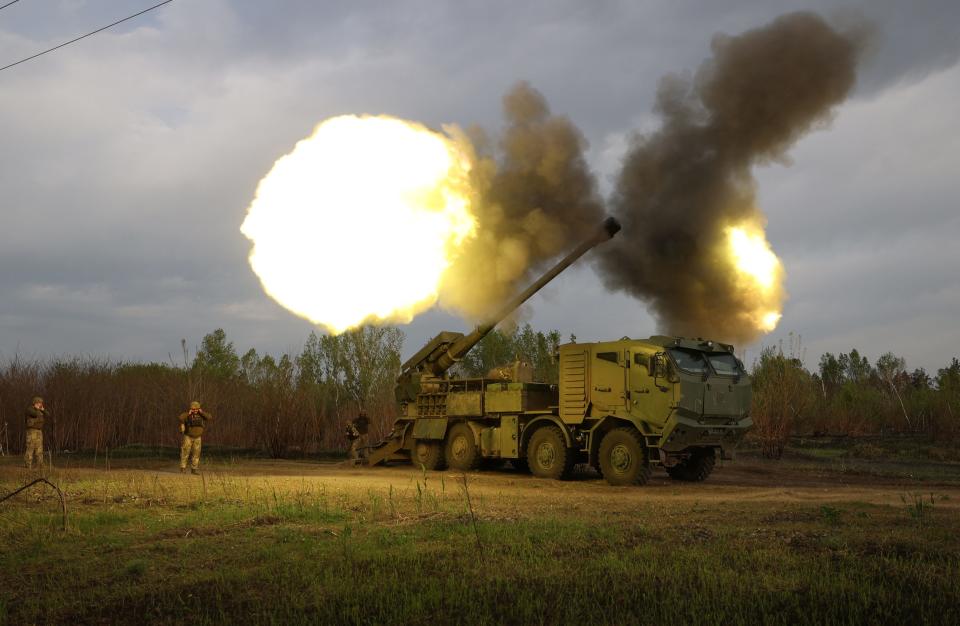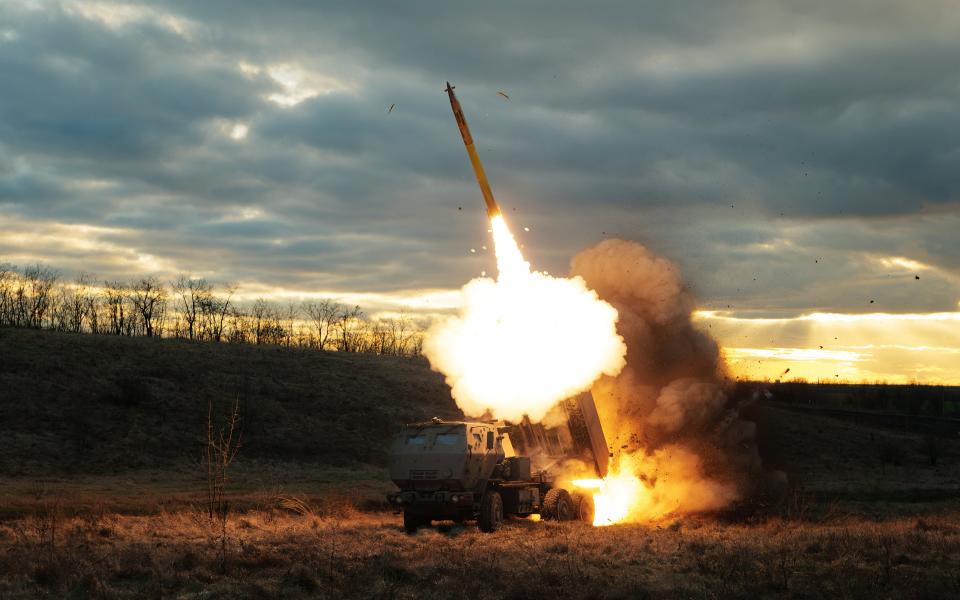NATO is finally giving Ukraine a shot at repelling Russia's destructive glide-bomb attacks on a major city

A number of NATO members have relaxed restrictions on Ukraine using their weapons to strike Russia.
The US and its allies have moved recently to allow Ukraine to hit targets across the border.
The policy changes could help Ukraine repel Russian glide-bomb strikes in and around Kharkiv city.
A handful of NATO countries have lifted the restrictions on Ukraine using their weapons to strike military targets inside Russia, giving Kyiv's forces new battlefield options that could help them defeat the highly destructive glide bombs they have so far struggled to stop.
Ukraine had long been barred from using Western-provided weapons to strike beyond its borders, as many of its partners — including the US — were concerned that allowing Kyiv to do so would lead Russian President Vladimir Putin to escalate the conflict even further.
Western positions on this issue have softened in the wake of Russia's ongoing offensive in the northeastern Kharkiv region, which began last month. Ukrainian officials argued the restrictions essentially prevented Kyiv from stopping the onslaught by giving Moscow space from which it could mass troops and launch glide bombs with impunity.
Multiple NATO countries have now either partially or completely lifted their restrictions. Facing increasing pressure from Ukraine and its European partners, the US finally changed its long-held stance last week, allowing Kyiv to strike inside Russia — but only in the area near the Kharkiv region.

Conflict analysts at the Institute for the Study of War think tank said "the provision of Western air-defense systems and the lifting of Western restrictions on Ukraine's ability to strike military targets in Russian territory with Western-provided weapons remain crucial for Ukraine to repel Russian glide bomb and missile strikes against Kharkiv City."
"These policy changes will allow Ukrainian forces to use Western-provided systems to strike Russian firing and staging areas in Russia's border areas and airspace," the analysts wrote in a June 2 assessment.
They said Ukraine's demonstrated ability to down Moscow's warplanes in front-line areas in past battles suggests Kyiv can likely find success again and protect Kharkiv city and the greater region from glide-bomb strikes launched from Russian airspace.
Glide bombs have been a threat to Ukrainian forces throughout much of the war, but they have proven to be a significant problem in recent weeks as Russia used them to pound Kharkiv city and the surrounding area. Russian aircraft can launch these standoff weapons from the safety of their own airspace and out of the reach of Ukraine's air-defense systems.

The only ways for Ukraine to defend troops and civilians from these bombs is to intercept the Russian aircraft before a launch or strike them on the ground. Kyiv has largely been unable to do this, but the policy changes — and the additional air-defense capabilities from the West — could help give the country more reach and resources to engage the threat.
"Ideally, launch aircraft would be caught on the ground, but as a fallback, a surface-to-air missile (SAM) system like Patriot — with a range of around 100 miles (depending on the target) — could be pushed closer to the front line to shoot down Russian aircraft before release," Matthew Savill, the director of military sciences at RUSI, wrote in new commentary.
He said that these "so-called 'SAMbushes' involve removing launchers from around infrastructure and putting them at greater risk of attack, but pose a challenge to Russian aircraft which currently fire from airspace where they believe themselves to be safe."
Experts like Savill, however, have warned that the policy changes are not necessarily a silver bullet for Ukraine, and deep-strike capabilities alone won't be enough to win the war.

The Biden administration's relaxing of its policy also comes with its limitations. Ukraine can only conduct cross-border strikes in Russian territory right around the Kharkiv region, and it is still barred from conducting longer-range strikes with its most powerful US-provided missiles. Kyiv must instead rely on American-provided rockets and artillery.
Washington's guidance is "specifically focused on Ukraine's defense against military targets that are just over the border, and targets that Russia is using to physically launch offensives against Ukraine proper," White House National Security Council spokesperson John Kirby told reporters on Monday.
The US policy prohibiting Ukraine from using its supply of MGM-140 Army Tactical Missile Systems, also known as ATACMS, or conducting long-range strikes inside Russia "has not changed," Kirby added.
US officials have stressed that Washington could still make further adjustments to its policy, but it's ultimately dependent on evolutions on the battlefield. Whether the Biden administration will become even more lenient with its restrictions — following in the footsteps of some of its European allies — remains to be seen.

Speaking in Prague on Friday, Secretary of State Antony Blinken said the "hallmark" of American support for Ukraine has been to "adapt and adjust as necessary to meet what's actually going on on the battlefield, to make sure that Ukraine has what it needs when it needs it, to do that deliberately and effectively."
"That's exactly what we're doing in response to what we've now seen in and around the Kharkiv region," Blinken told reporters. "Going forward, we'll continue to do what we've been doing."
Ukraine has already taken advantage of the new policy. On Monday, for instance, Kyiv reportedly used rockets fired from its US-provided M142 High Mobility Artillery Rocket System, or HIMARS, to strike Russian air-defense assets in the Belgorod region, which is just over the border from Kharkiv.
According to media reports and open-source intelligence accounts, Ukraine struck Russian S-300/S-400 air-defense systems that have been repurposed for surface-to-surface applications and have been used in attacks around Kharkiv.
Read the original article on Business Insider

 Yahoo News
Yahoo News 
